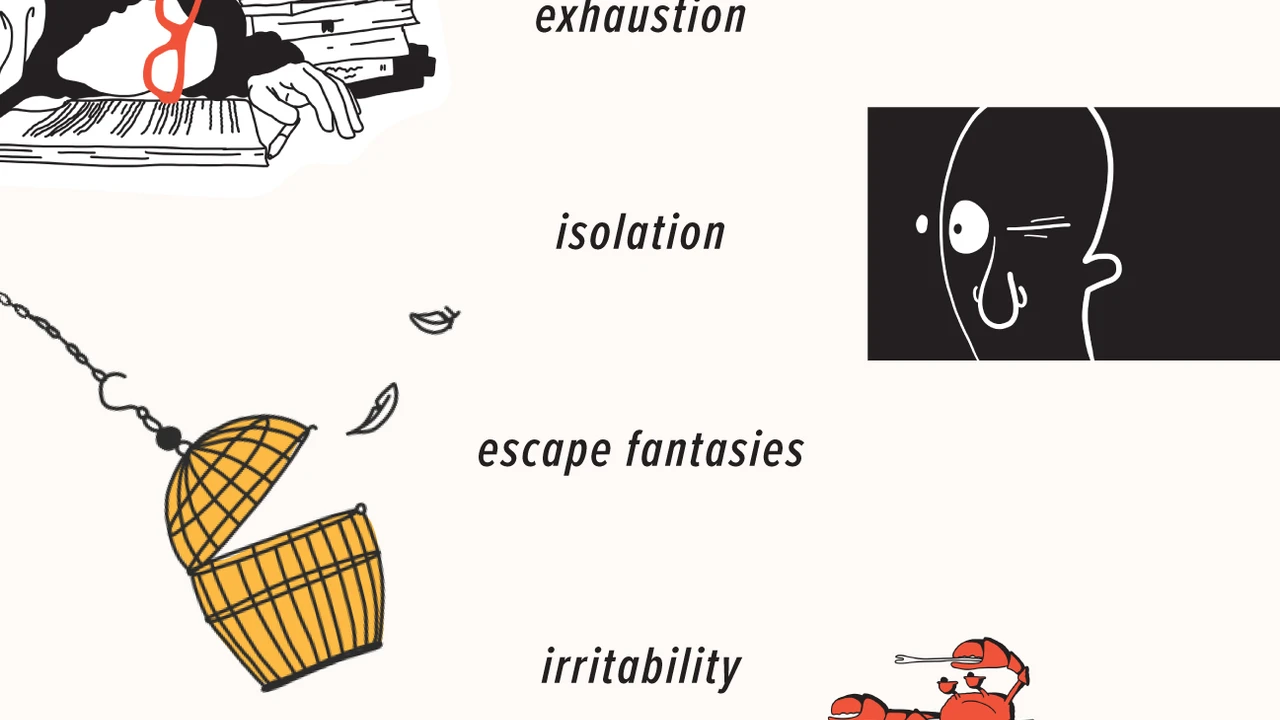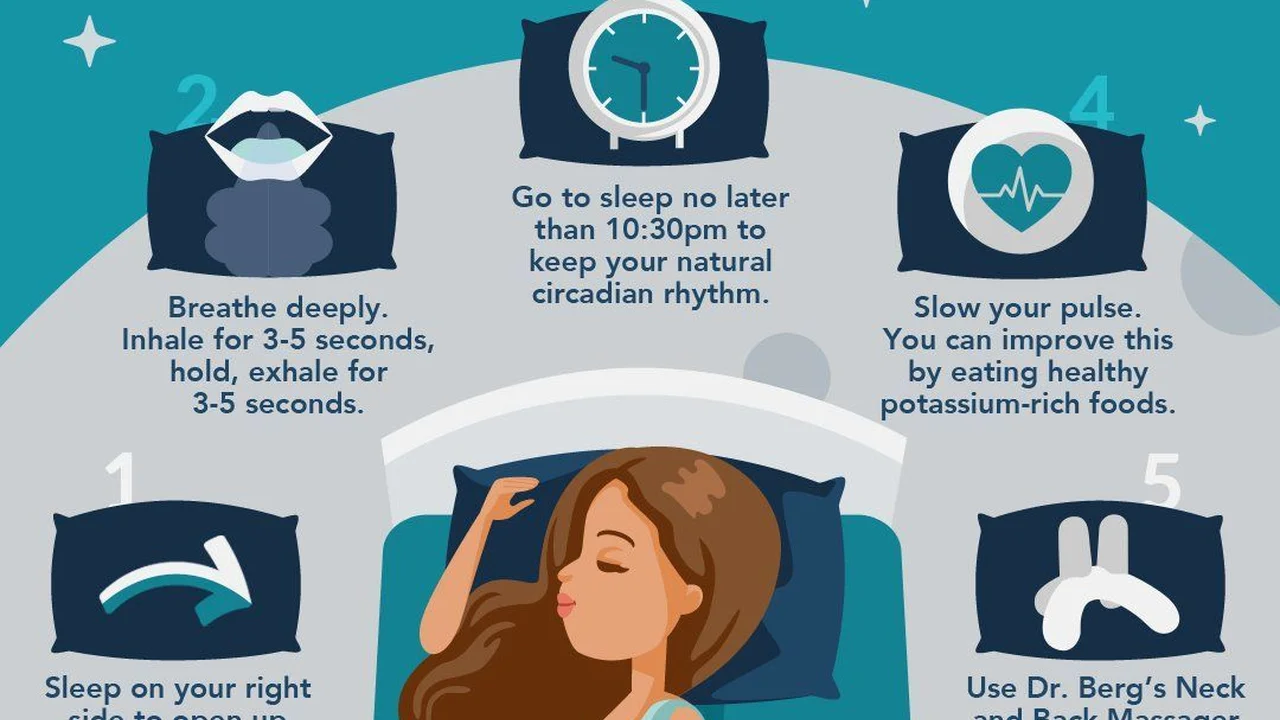Recognizing Signs of Burnout and How to Recover
Creating a Sustainable Lifestyle: Learn how to create a sustainable lifestyle and adopt eco-friendly practices. This guide covers essential tips for reducing your environmental impact. Contribute to a healthier planet and improve your well-being with sustainable living.

Understanding Sustainable Living What is Eco-Friendly Living All About
Hey there! Ever wondered what it *really* means to live sustainably? It's not just a buzzword; it's a way of life. Eco-friendly living is all about making choices that minimize your impact on the environment. Think of it as being a responsible tenant on Planet Earth. We want to leave it in good shape for future generations, right?
Sustainable living encompasses a wide range of practices, from reducing your carbon footprint to conserving water and energy. It involves being mindful of the resources you use and finding ways to reduce waste. It also means supporting businesses and organizations that are committed to environmental responsibility.
Why is this important? Because our current consumption habits are unsustainable. We're using resources faster than the planet can replenish them, leading to deforestation, pollution, climate change, and a whole host of other environmental problems. By adopting eco-friendly practices, we can help to mitigate these issues and create a more sustainable future.
Reducing Your Carbon Footprint Eco-Friendly Transportation and Energy Conservation
One of the biggest ways to embrace eco-friendly living is by shrinking your carbon footprint. This essentially means reducing the amount of greenhouse gases you release into the atmosphere. And guess what? It's easier than you might think!
Transportation: How do you get around? Consider walking, biking, or using public transportation whenever possible. These options are not only better for the environment but also great for your health! If you need to drive, try carpooling or consider switching to a hybrid or electric vehicle. Electric scooters and bikes are also becoming increasingly popular and affordable.
Energy Conservation: Small changes in your home can make a big difference. Switch to energy-efficient LED light bulbs. They use significantly less energy than traditional bulbs and last much longer. Unplug electronics when you're not using them. Even when turned off, they can still draw power, a phenomenon known as "phantom load." Consider using a smart power strip to automatically cut power to devices when they're not in use.
Home Energy Audits: Consider getting a home energy audit. Many utility companies offer them for free or at a reduced cost. An auditor will assess your home's energy efficiency and recommend ways to improve it, such as adding insulation or sealing air leaks.
Conserving Water Eco-Friendly Practices for Water Usage Reduction
Water is a precious resource, and conserving it is crucial for sustainable living. There are plenty of simple ways to reduce your water consumption at home.
Fix Leaks: Even a small drip can waste gallons of water over time. Fix any leaks in your faucets, toilets, and pipes as soon as possible.
Shorter Showers: Try to take shorter showers. Even cutting your shower time by a few minutes can make a significant difference. You can also install a low-flow showerhead to reduce water usage without sacrificing water pressure.
Water-Efficient Appliances: When it's time to replace your appliances, look for water-efficient models. Washing machines and dishwashers with the Energy Star label use significantly less water than older models.
Landscaping: Consider xeriscaping, which involves designing your landscape with drought-tolerant plants that require minimal watering. You can also use mulch to help retain moisture in the soil.
Rain Barrels: Collect rainwater in rain barrels to use for watering your garden. It's a great way to conserve water and reduce your reliance on municipal water sources.
Reducing Waste Eco-Friendly Recycling and Composting for a Zero-Waste Lifestyle
Waste reduction is another key component of sustainable living. The goal is to minimize the amount of trash you send to landfills.
Recycling: Make sure you're recycling properly. Familiarize yourself with your local recycling guidelines and sort your recyclables accordingly. Rinse out containers before recycling them to prevent contamination.
Composting: Start composting food scraps and yard waste. Composting reduces the amount of organic waste sent to landfills and creates nutrient-rich soil for your garden. You can compost in a backyard compost bin or use a countertop composter for smaller spaces.
Reduce, Reuse, Recycle: Remember the three Rs: Reduce, Reuse, Recycle. Before buying something new, ask yourself if you really need it. Look for opportunities to reuse items instead of throwing them away. And when you do need to dispose of something, recycle it if possible.
Reusable Bags: Always bring reusable shopping bags with you to the grocery store. Plastic bags are a major source of pollution and can take hundreds of years to decompose.
Say No to Single-Use Plastics: Avoid single-use plastics like straws, coffee cups, and plastic cutlery. Bring your own reusable alternatives instead.
Eco-Friendly Cleaning Products Non-Toxic Cleaning Solutions for a Healthier Home
Conventional cleaning products often contain harsh chemicals that can be harmful to your health and the environment. Switch to eco-friendly cleaning products that are made with natural ingredients.
DIY Cleaners: You can easily make your own cleaning products using simple ingredients like vinegar, baking soda, and lemon juice. There are tons of DIY cleaning recipes online.
Look for Eco-Labels: When buying cleaning products, look for eco-labels like Green Seal or EcoLogo. These labels indicate that the product has been certified to meet certain environmental standards.
Avoid Harsh Chemicals: Avoid cleaning products that contain harsh chemicals like bleach, ammonia, and formaldehyde. These chemicals can irritate your skin, eyes, and respiratory system.
Sustainable Fashion Ethical Clothing Choices for an Eco-Conscious Wardrobe
The fashion industry is a major polluter, but you can make more sustainable choices when it comes to your wardrobe.
Buy Less: The most sustainable thing you can do is to buy less clothing. Before buying something new, ask yourself if you really need it.
Shop Secondhand: Shop at thrift stores and consignment shops. Buying secondhand clothing is a great way to reduce waste and save money.
Choose Sustainable Materials: Look for clothing made from sustainable materials like organic cotton, linen, hemp, and recycled fabrics.
Support Ethical Brands: Support brands that are committed to ethical and sustainable practices. Look for brands that pay fair wages to their workers and use environmentally friendly manufacturing processes.
Take Care of Your Clothes: Take good care of your clothes so they last longer. Wash them in cold water and hang them to dry.
Eco-Friendly Gardening Sustainable Practices for a Green Thumb
Gardening can be a great way to connect with nature and grow your own food, but it's important to garden sustainably.
Organic Gardening: Avoid using synthetic pesticides and fertilizers. Instead, use organic methods to control pests and nourish your plants.
Composting: Compost food scraps and yard waste to create nutrient-rich soil for your garden.
Water Wisely: Water your garden deeply but infrequently. Water in the early morning or late evening to minimize evaporation.
Native Plants: Plant native species that are adapted to your local climate. Native plants require less water and fertilizer than non-native plants.
Attract Pollinators: Plant flowers that attract pollinators like bees and butterflies. Pollinators are essential for a healthy garden.
Supporting Local Businesses Eco-Friendly Consumption for Community Growth
Supporting local businesses is a great way to boost your community's economy and reduce your environmental impact.
Farmers Markets: Shop at farmers markets for fresh, local produce. Farmers markets support local farmers and reduce the distance your food travels.
Local Shops: Shop at local shops instead of big-box stores. Local shops are often more committed to sustainable practices and offer unique products.
Restaurants: Eat at restaurants that source their ingredients locally. Local restaurants support local farmers and reduce the environmental impact of food transportation.
Eco-Friendly Travel Sustainable Tourism and Green Getaways
Traveling can be a lot of fun, but it can also have a significant environmental impact. Here are some tips for traveling more sustainably.
Choose Eco-Friendly Accommodations: Look for hotels and resorts that are committed to sustainable practices. These accommodations often have energy-efficient lighting, water-saving fixtures, and recycling programs.
Travel Light: Pack light to reduce your carbon footprint. The heavier your luggage, the more fuel your plane will burn.
Support Local Businesses: Support local businesses when you travel. Eat at local restaurants, shop at local shops, and hire local guides.
Respect the Environment: Respect the environment when you travel. Stay on marked trails, avoid littering, and don't disturb wildlife.
The Role of Renewable Energy in Sustainable Living Solar Panels and Wind PowerTransitioning to renewable energy sources is crucial for reducing our reliance on fossil fuels and mitigating climate change.
Solar Panels: Consider installing solar panels on your home. Solar panels convert sunlight into electricity, providing a clean and renewable source of power.
Wind Power: Support wind power projects in your community. Wind turbines convert wind energy into electricity.
Energy Efficiency: Even if you can't install solar panels or wind turbines, you can still reduce your energy consumption by making your home more energy efficient.
Embracing Minimalism A Sustainable Approach to Consumption
Minimalism is a lifestyle that focuses on living with less. It's about intentionally owning only the things you need and that bring you joy.
Declutter: Start by decluttering your home. Get rid of anything you don't need or use.
One In, One Out: Adopt the "one in, one out" rule. For every new item you bring into your home, get rid of one old item.
Quality Over Quantity: Focus on buying quality items that will last longer, rather than cheap, disposable items.
Experiences Over Things: Prioritize experiences over material possessions. Spend your money on travel, concerts, and other activities that bring you joy.
The Importance of Education and Advocacy for Sustainable Living
Education and advocacy are essential for promoting sustainable living. The more people who understand the importance of environmental protection, the more likely we are to create a sustainable future.
Educate Yourself: Learn as much as you can about sustainable living. Read books, articles, and blogs about environmental issues.
Share Your Knowledge: Share your knowledge with others. Talk to your friends, family, and colleagues about sustainable living.
Support Environmental Organizations: Support environmental organizations that are working to protect the planet.
Advocate for Change: Advocate for policies that promote sustainable living. Contact your elected officials and let them know that you support environmental protection.
Specific Product Recommendations for Eco-Friendly Living Sustainable Product Choices and Comparisons
Alright, let's get down to brass tacks! Here are some specific product recommendations to help you kickstart your eco-friendly journey. Remember, the "greenest" product is often the one you already own and use responsibly! But when it's time to upgrade or replace, consider these:
Reusable Water Bottles: Hydrate Sustainably with these Top Picks
Single-use plastic water bottles are a HUGE source of pollution. Investing in a good reusable bottle is a no-brainer. Here are a few options:
- Hydro Flask: (Approx. $30-$50) These are super popular for a reason. They keep drinks cold (or hot!) for hours, are durable, and come in a variety of sizes and colors. Perfect for everyday use, hiking, or travel.
- Klean Kanteen: (Approx. $25-$40) Another excellent stainless steel option. Klean Kanteen focuses on simple designs and uses recycled materials in their manufacturing process.
- BPA-Free Plastic Bottles (e.g., Nalgene): (Approx. $10-$20) If you prefer plastic, opt for a BPA-free option. Nalgene bottles are incredibly durable and leak-proof, making them great for outdoor adventures.
Comparison: Stainless steel bottles are generally more durable and keep drinks colder/hotter for longer. Plastic bottles are lighter and often more affordable. Consider your needs and budget when making your choice.
Reusable Shopping Bags: Ditch the Plastic with Style
Plastic shopping bags are a nightmare for the environment. Keep a set of reusable bags in your car, purse, or backpack so you're always prepared.
- ChicoBag: (Approx. $10-$15) These bags are lightweight, compact, and fold up into a tiny pouch, making them super easy to carry around.
- Baggu: (Approx. $12-$15) Baggu bags are known for their fun prints and durability. They're made from recycled materials and can hold a surprising amount of weight.
- Heavy-Duty Canvas Bags: (Approx. $15-$25) These bags are perfect for carrying heavy groceries or other items. Look for organic cotton canvas for an even more sustainable option.
Comparison: ChicoBags are the most compact, while canvas bags are the most durable. Baggu offers a good balance of style and functionality.
Compost Bin: Turn Food Scraps into Garden Gold
Composting is a fantastic way to reduce food waste and create nutrient-rich soil for your garden. Even if you don't have a garden, you can compost! Many cities offer composting services.
- Backyard Compost Bin (e.g., Tumbling Composter): (Approx. $80-$150) These bins are great for larger yards and allow you to easily turn the compost, which speeds up the decomposition process.
- Countertop Compost Bin (e.g., OXO Good Grips Easy-Clean Compost Bin): (Approx. $20-$30) These bins are small and discreet, perfect for collecting food scraps in your kitchen.
- Worm Composter (e.g., Worm Factory 360): (Approx. $100-$200) Worm composting (vermicomposting) uses worms to break down food scraps. It's a great option for small spaces and produces very high-quality compost.
Comparison: Backyard compost bins are best for larger quantities of waste. Countertop bins are convenient for collecting scraps. Worm composters are efficient and produce nutrient-rich castings.
Eco-Friendly Cleaning Supplies: Clean Green and Breathe Easy
Say goodbye to harsh chemicals and hello to natural cleaning solutions. Many brands offer effective and eco-friendly alternatives.
- Mrs. Meyer's Clean Day: (Approx. $4-$6 per bottle) Mrs. Meyer's offers a wide range of plant-derived cleaning products with delightful scents.
- Method: (Approx. $3-$5 per bottle) Method products are known for their stylish packaging and effective cleaning power. They use plant-based ingredients and are committed to sustainability.
- Blueland: (Approx. $12 for starter kit) Blueland offers refillable cleaning products. You buy the initial bottles and then purchase refills in tablet form, reducing plastic waste.
Comparison: Mrs. Meyer's is widely available and affordable. Method offers stylish packaging and effective cleaning. Blueland is a great option for minimizing plastic waste.
LED Light Bulbs: Shine Bright and Save Energy
Switching to LED light bulbs is one of the easiest and most impactful things you can do to save energy. LEDs use significantly less energy than traditional incandescent bulbs and last much longer.
- Philips LED Bulbs: (Approx. $3-$5 per bulb) Philips offers a wide range of LED bulbs in various shapes, sizes, and brightness levels.
- GE LED Bulbs: (Approx. $3-$5 per bulb) GE is another reputable brand that offers high-quality LED bulbs.
- Cree LED Bulbs: (Approx. $4-$6 per bulb) Cree bulbs are known for their energy efficiency and long lifespan.
Comparison: All three brands offer excellent LED bulbs. Look for bulbs with the Energy Star label for maximum energy efficiency.
Bamboo Toothbrush: A Small Change with a Big Impact
Plastic toothbrushes contribute to a significant amount of plastic waste. Bamboo toothbrushes are a sustainable alternative. The handle is made from biodegradable bamboo, and you can often find options with replaceable heads.
- Brush with Bamboo: (Approx. $5-$7) Brush with Bamboo toothbrushes are made from sustainably harvested bamboo and come in compostable packaging.
- WooBamboo!: (Approx. $4-$6) WooBamboo! toothbrushes are another popular option. They also offer bamboo floss and other eco-friendly oral care products.
Reusable Food Storage Containers: Ditch the Plastic Wrap
Plastic wrap and single-use plastic containers are wasteful and can leach chemicals into your food. Switch to reusable food storage containers made from glass, stainless steel, or silicone.
- Glass Food Storage Containers (e.g., Pyrex, Snapware): (Approx. $20-$40 for a set) Glass containers are durable, easy to clean, and don't leach chemicals.
- Stainless Steel Food Storage Containers (e.g., LunchBots): (Approx. $25-$50 per container) Stainless steel containers are lightweight, durable, and perfect for packing lunches.
- Silicone Food Storage Bags (e.g., Stasher Bags): (Approx. $10-$20 per bag) Silicone bags are reusable, flexible, and great for storing snacks or leftovers.
Final Thoughts: Small Steps, Big Impact
Living sustainably doesn't have to be overwhelming. Start small, make gradual changes, and focus on the areas where you can have the biggest impact. Every little bit helps! Remember to vote with your wallet by supporting businesses that are committed to environmental responsibility. And most importantly, spread the word! Encourage your friends, family, and colleagues to join you on your sustainable living journey. Together, we can create a healthier and more sustainable future for generations to come.
:max_bytes(150000):strip_icc()/277019-baked-pork-chops-with-cream-of-mushroom-soup-DDMFS-beauty-4x3-BG-7505-5762b731cf30447d9cbbbbbf387beafa.jpg)





